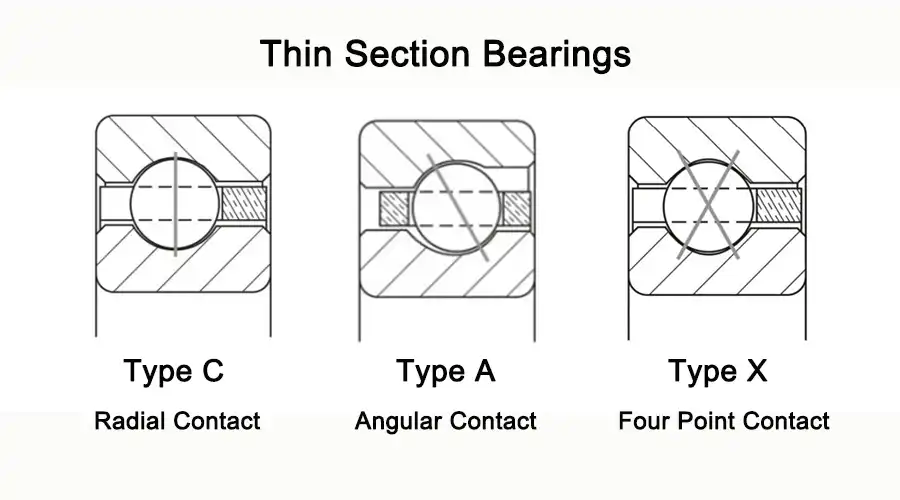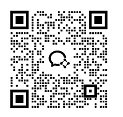What are the Technical Specifications of Four-Point Contact Ball Bearings?
Four-point contact ball bearings are a specialized type of rolling element bearing designed to handle complex loads in various industrial applications. These bearings are characterized by their unique internal geometry, which allows them to support axial loads in both directions, as well as radial loads and moment loads. This versatility makes them an essential component in many machines and equipment across different industries.
What are the advantages of four-point contact ball bearings over other bearing types?

Four-point contact ball bearings offer several advantages over other bearing types, making them a preferred choice in many applications. These bearings are designed to handle complex load combinations, including axial loads in both directions, radial loads, and moment loads. This versatility sets them apart from traditional bearings and contributes to their growing popularity in various industries.
One of the primary advantages of four-point contact ball bearings is their ability to handle high axial loads in both directions. This feature is particularly beneficial in applications where reversing axial loads are common, such as in machine tool spindles, rotary tables, and aerospace equipment. The four-point contact design allows for a more even distribution of stress across the bearing, resulting in improved load-carrying capacity and reduced wear.
Another significant advantage is the space-saving design of these bearings. Four-point contact ball bearings can often replace two angular contact bearings in many applications, leading to more compact and lightweight designs. This characteristic is especially valuable in industries where space and weight constraints are critical, such as aerospace and robotics.
The unique design of four-point contact ball bearings also contributes to their exceptional rigidity and precision. The four contact points between the balls and raceways provide increased stiffness, which is crucial for maintaining accuracy in high-precision applications. This feature makes them ideal for use in machine tools, measuring equipment, and other precision instruments where minimizing deflection and maintaining tight tolerances is essential.
Furthermore, four-point contact ball bearings often exhibit lower friction compared to other bearing types when handling combined loads. This reduced friction translates to improved energy efficiency and lower operating temperatures, which can lead to extended bearing life and reduced maintenance requirements.
The versatility of four-point contact ball bearings also extends to their ability to accommodate misalignment to a certain degree. While not as forgiving as some self-aligning bearings, they can handle small amounts of shaft misalignment without significant performance degradation. This characteristic can be beneficial in applications where perfect alignment is challenging to achieve or maintain.
Lastly, four-point contact ball bearings often have a higher load-carrying capacity compared to similarly sized angular contact bearings. This increased capacity allows for downsizing in some applications, further contributing to space and weight savings in machine designs.
How do four-point contact ball bearings differ in construction from other ball bearings?
The construction of four-point contact ball bearings is a key factor that sets them apart from other types of ball bearings. Understanding these differences is crucial for engineers and designers when selecting the appropriate bearing for specific applications. The unique design features of four-point contact ball bearings contribute to their exceptional performance characteristics and versatility.
The most distinctive feature of four-point contact ball bearings is their raceway geometry. Unlike conventional ball bearings with circular arc grooves, four-point contact bearings have raceways with a gothic arch profile. This profile creates four distinct contact points between each ball and the inner and outer rings – two on the inner ring and two on the outer ring. This design is the origin of the bearing's name and is fundamental to its unique load-handling capabilities.
The gothic arch profile of the raceways is carefully engineered to optimize the contact angle between the balls and the raceways. This angle is typically larger than that found in standard angular contact bearings, often ranging from 35 to 45 degrees. The larger contact angle allows the bearing to handle higher axial loads relative to its size, making it particularly effective in applications with significant thrust forces.
Another notable aspect of four-point contact ball bearing construction is the ball complement. These bearings often feature a full complement of balls without a cage or separator. This design choice maximizes the number of load-carrying elements within the bearing, increasing its load capacity. However, some designs may incorporate a cage to ensure proper ball spacing and reduce friction, especially in high-speed applications.
The materials used in four-point contact ball bearings are typically of high quality to withstand the complex loads and demanding operating conditions. The rings and balls are often made from high-grade bearing steel, such as AISI 52100 or equivalent materials, known for their hardness, wear resistance, and dimensional stability. For more specialized applications, ceramic balls or other advanced materials may be used to enhance performance in extreme conditions.
The manufacturing process for four-point contact ball bearings requires high precision to ensure the correct geometry of the gothic arch raceways. Advanced grinding and honing techniques are employed to achieve the required surface finish and dimensional accuracy. This precision is crucial for maintaining the four-point contact and ensuring optimal load distribution during operation.
Sealing arrangements in four-point contact ball bearings can vary depending on the application requirements. Some designs incorporate integral seals or shields to protect the bearing internals from contaminants and retain lubricant. Others may be open, relying on external sealing solutions provided by the equipment designer.
Lubrication is another critical aspect of four-point contact ball bearing construction. These bearings can be supplied with various lubrication options, including grease lubrication for standard applications or oil lubrication for high-speed or high-temperature environments. The choice of lubricant and lubrication method can significantly impact the bearing's performance and service life.
The mounting and fitting of four-point contact ball bearings also differ from standard ball bearings. Due to their ability to handle axial loads in both directions, these bearings are often mounted in pairs or sets. The mounting arrangement must be carefully designed to ensure proper preload and avoid overconstraint, which could lead to reduced performance or premature failure.
What are the key applications and industries that utilize four-point contact ball bearings?
Four-point contact ball bearings have found widespread use across various industries due to their unique capabilities and versatile performance characteristics. These bearings are particularly valued in applications that require high precision, the ability to handle complex loads, and compact design. Understanding the key applications and industries that utilize four-point contact ball bearings provides insight into their importance in modern machinery and equipment.
One of the primary industries that heavily relies on four-point contact ball bearings is the machine tool sector. In this field, these bearings are often used in spindle assemblies for lathes, milling machines, and grinding machines. The high precision and rigidity offered by four-point contact bearings are crucial for maintaining tight tolerances and achieving superior surface finishes in machining operations. Their ability to handle both axial and radial loads makes them ideal for the varying forces encountered during cutting processes.
The aerospace industry is another significant user of four-point contact ball bearings. These bearings are employed in various aircraft components, including landing gear systems, flap actuators, and engine gearboxes. The high load capacity and compact design of four-point contact bearings are particularly advantageous in aerospace applications, where weight and space savings are critical. Additionally, their ability to operate reliably under extreme conditions, including high temperatures and high speeds, makes them suitable for demanding aerospace environments.
In the robotics and automation industry, four-point contact ball bearings play a crucial role in ensuring precise and smooth motion. They are often used in robot arm joints, rotary tables, and indexing mechanisms. The bearings' ability to handle moment loads and maintain accuracy under varying load conditions is essential for robotic applications that require repetitive, high-precision movements.
The renewable energy sector, particularly wind turbines, is another area where four-point contact ball bearings find extensive use. These bearings are often employed in the pitch and yaw systems of wind turbines, where they must handle large, varying loads while maintaining precise positioning. The ability of four-point contact bearings to accommodate misalignment to some degree is particularly beneficial in these large-scale applications, where perfect alignment can be challenging to achieve.
In the medical equipment industry, four-point contact ball bearings are used in various diagnostic and treatment devices. CT scanners, for example, utilize these bearings in their rotating gantry systems. The high precision and smooth operation provided by four-point contact bearings are essential for producing clear, artifact-free images in medical imaging equipment.
The automotive industry also benefits from the use of four-point contact ball bearings, particularly in specialized applications. These bearings can be found in steering systems, transmissions, and wheel hub units of high-performance vehicles. Their compact design and ability to handle combined loads make them suitable for the space-constrained and demanding environments found in modern automobiles.
Industrial machinery, including textile machines, printing presses, and packaging equipment, often incorporate four-point contact ball bearings in their designs. These bearings are used in applications requiring high-speed rotation, precise positioning, and the ability to handle both radial and axial loads. Their versatility allows for simplified machine designs and improved overall performance.
The semiconductor industry relies on four-point contact ball bearings for various manufacturing equipment. These bearings are used in wafer handling systems, inspection equipment, and lithography machines. The ultra-high precision and cleanliness requirements of semiconductor manufacturing align well with the capabilities of four-point contact bearings.
In the field of scientific instruments and metrology equipment, four-point contact ball bearings are valued for their ability to maintain extreme precision. They are used in coordinate measuring machines (CMMs), optical equipment, and other high-precision measurement devices where accuracy is paramount.
Lastly, the heavy industry sector, including mining and construction equipment, utilizes four-point contact ball bearings in applications that require high load-carrying capacity in compact designs. These bearings can be found in large gearboxes, excavator slewing rings, and other heavy-duty rotating equipment.
Conclusion
Four-point contact ball bearings represent a significant advancement in bearing technology, offering unique advantages in handling complex loads, maintaining high precision, and providing space-saving solutions across various industries. Their distinctive construction, characterized by the gothic arch raceway profile and four-point contact geometry, enables these bearings to excel in applications ranging from high-precision machine tools to large-scale wind turbines.
The versatility and performance capabilities of four-point contact ball bearings have made them indispensable components in modern machinery and equipment. As industries continue to demand higher precision, efficiency, and reliability from their rotating equipment, the role of four-point contact ball bearings is likely to grow even further. Ongoing research and development in bearing technology may lead to further improvements in these bearings, potentially expanding their applications and enhancing their performance in existing uses.
Engineers and designers across various sectors should consider the unique properties of four-point contact ball bearings when selecting components for their applications. By understanding the advantages, construction details, and key applications of these bearings, professionals can make informed decisions that lead to improved machine performance, increased efficiency, and enhanced reliability in their designs.
References
1. SKF Group. (2021). "Four-point contact ball bearings." SKF.com.
2. NSK Ltd. (2020). "Four-Point Contact Ball Bearings." NSK.com.
3. Schaeffler Technologies AG & Co. KG. (2019). "Four-point contact bearings." Schaeffler.com.
4. Timken Company. (2018). "Four-Point Contact Ball Bearings." Timken.com.
5. NTN Corporation. (2022). "Four-Point Contact Ball Bearings." NTN.com.
6. Harris, T. A., & Kotzalas, M. N. (2006). "Essential Concepts of Bearing Technology." CRC Press.
7. Hamrock, B. J., Schmid, S. R., & Jacobson, B. O. (2004). "Fundamentals of Machine Elements." McGraw-Hill Higher Education.
8. American Bearing Manufacturers Association. (2017). "ABMA 9:2015 - Load Ratings and Fatigue Life for Ball Bearings." ABMA.org.
9. International Organization for Standardization. (2018). "ISO 281:2007 - Rolling bearings — Dynamic load ratings and rating life." ISO.org.
10. Zaretsky, E. V. (2012). "Rolling Bearing Steels – A Technical and Historical Perspective." NASA Glenn Research Center.

